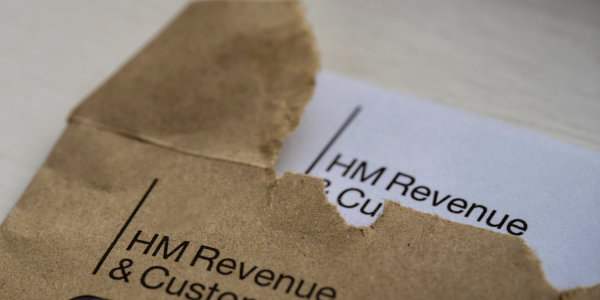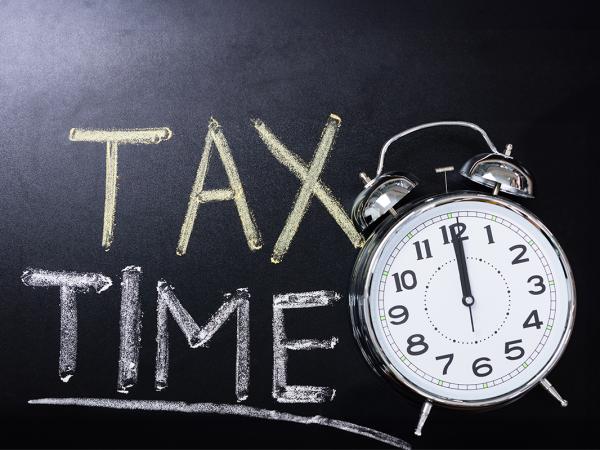Have you received a simple assessment letter from HMRC?
HMRC are sending simple assessment letters to about 560,000 taxpayers over the next few months. This number includes 140,000 pensioners. For many, this will be the first time they have received a simple assessment letter.
In this article, we explain more about simple assessment and what you need to do if you receive one in the coming months.

HMRC use simple assessment as a way of collecting tax they think you owe. It is used as an alternative to self assessment, where you would need to fill in a tax return, if HMRC cannot collect the tax by adjusting your PAYE tax code. For example, this might be where you don’t have a PAYE source of income – like a private pension – or where you owe too much tax for it to be collected via PAYE.
Some taxpayers, especially pensioners, are starting to have a tax liability for the first time in several years. This is because frozen tax allowances have not kept pace with rising rates for the state pension and bank interest.
What to do if you receive a simple assessment letter
If you receive a simple assessment letter from HMRC, you should check the figures carefully. The second page of the letter contains a full tax calculation, which sets out the different sources of taxable income which HMRC believes you had in the tax year.
Make sure that the calculation includes all your sources of taxable income in the year, as well as any deductions or reliefs you may be entitled to. Below is a list of common sources of income you might see in your simple assessment calculation:
- PAYE income
-
For any source of income which had PAYE tax deducted, you should have received a P60 (or P45) form showing the total amount of income and tax paid. Check that the figures on the form match those used in the simple assessment calculation.
- State pension
-
If you receive a state pension, bear in mind that the taxable amount is the total entitlement for the year. This might be slightly different from the amount you received in the year – for example, if you receive payments 4-weekly and your first payment in the tax year included some entitlement for the previous year. Bear in mind also that if you receive payments 4-weekly, then 13 payments will be made in the tax year (not 12).
- Savings interest
-
The calculation may include figures for savings interest. HMRC receive information about bank interest directly from banks and building societies. However, this information might not always be accurate, so it is advisable to check the interest figure(s) carefully against your own records, adding up interest from all bank accounts you hold (excluding ISA accounts, which are tax-free). Unfortunately, HMRC does not provide a breakdown of the total amount of interest received against a specific account.
- Dividend income
-
If you receive dividend income, then this should also be included in your simple assessment calculation. Unlike with bank interest, HMRC does not generally receive information about dividends from third parties, even if these are held in a portfolio managed by your bank or some other investment management firm. It is therefore unlikely HMRC will know about your dividend income unless you have already told them. If you receive a simple assessment and it shows dividend income, this might just have been carried forward based on previous information held by HMRC. It is therefore very important you check the calculation if you had dividend income (other than income held in a stocks and shares ISA). Contact HMRC to let them know if dividend information is missing or inaccurate.
- Reliefs and allowances
-
Ensure the calculation includes any reliefs or allowances you are entitled to. For example, if you made an election for the marriage allowance, make sure this is correctly reflected in your calculation. You should also check that any pension contributions or gift aid donations are included.
Your simple assessment letter should also include a brief explanation of how the amount owed has arisen.
For further information on checking your simple assessment tax bill, see GOV.UK.
If you agree the calculation
If you agree the calculation, all you need to do is pay the amount owed to HMRC by the deadline given on the letter. See the heading below, How to pay.
If you do not agree the calculation
If you do not agree the calculation, you should contact HMRC to explain why within 60 days of the date of the letter. If you do not contact HMRC within 60 days, then you lose the right to query the calculation – though HMRC may, at their discretion, consider queries made after that 60-day deadline.
If you still do not agree with the calculation after HMRC have given you a final response to your queries, you can appeal to the First-tier Tribunal within 30 days of HMRC’s response.
When to pay your simple assessment bill
The simple assessment letter should tell you the date by which your tax should be paid.
In general, the amount owed under simple assessment should be settled by 31 January following the end of the tax year. For example, in the case of a simple assessment for the year ended 5 April 2024, the amount owed should be paid by 31 January 2025.
However, if HMRC do not issue the simple assessment for 2023/24 until after 31 October 2024, then the payment deadline is extended to three months after the date of the assessment.
If you receive a simple assessment for 2023/24, you do not need to wait until 31 January 2025 to make the payment if it suits you to pay it sooner, or if you need to pay in instalments. For example, if you owe £1,200 then you can pay £200 in six monthly instalments between August 2024 and January 2025. If you are able to pay the full amount by the deadline, you do not need to agree such a payment plan with HMRC.
If you cannot pay by the deadline
If you do not believe you will be able to pay your simple assessment bill for 2023/24 by 31 January 2025, then you should be aware that late payment interest will accrue from 1 February 2025. The current rates are on GOV.UK.
However, late payment penalties do not currently apply to late paid tax under simple assessment.
It is important that you contact HMRC to let them know if you are unable to make the payment in full by the deadline. You may be able to agree a payment plan with HMRC and avoid HMRC taking further action to collect the debt, such as referring your case to a debt collection agency.
How to pay
For information on how to pay your simple assessment bill, see our guidance.
For simple assessments relating to tax years prior to 2022/23, we understand it is not possible to pay online or via the personal tax account.
More information
See our guidance on simple assessment.
GOV.UK also publishes a simple assessment guide for pensioners.



